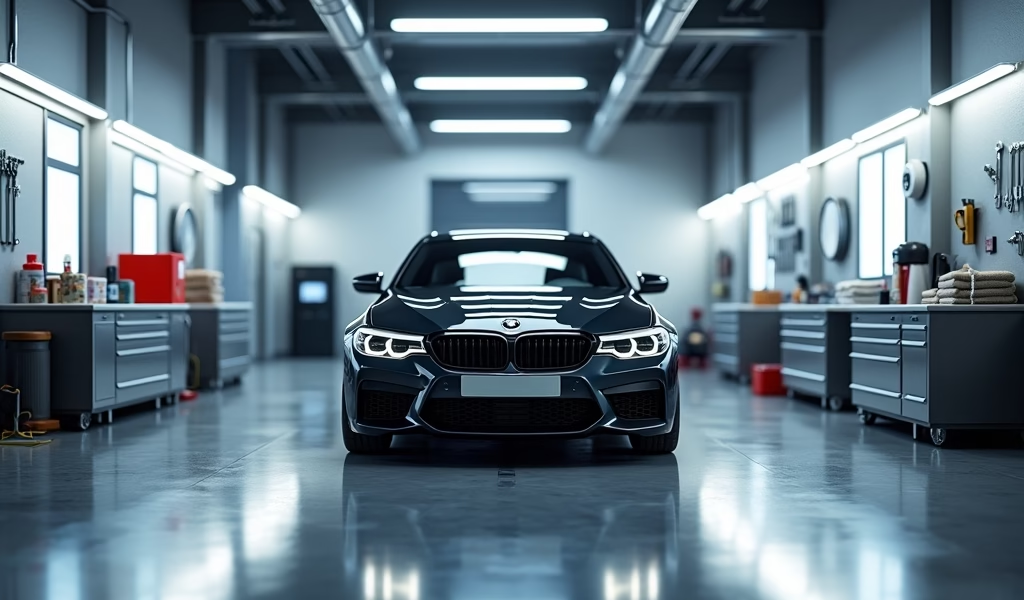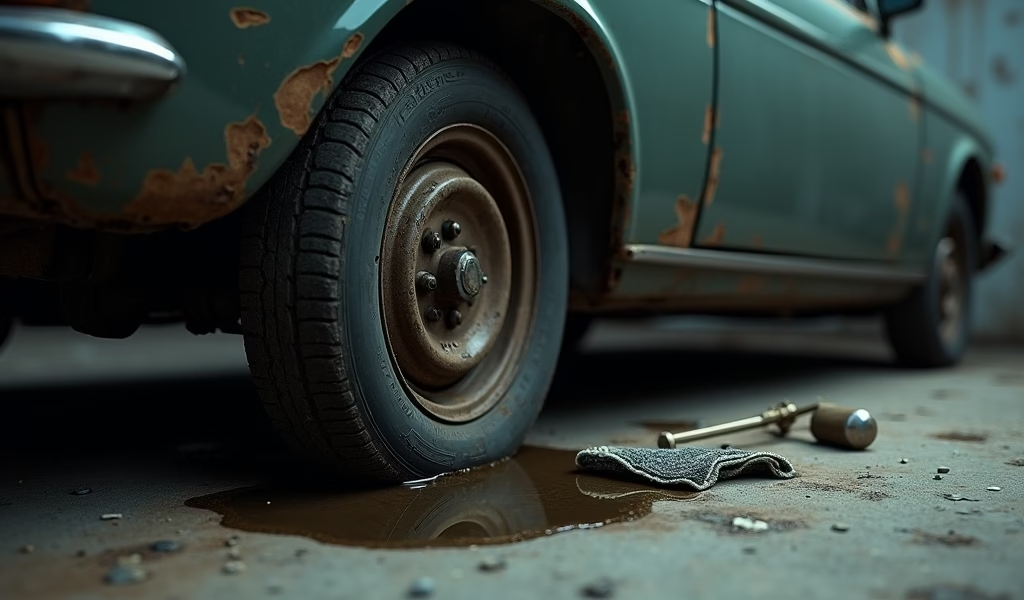Overview
This article provides nine essential maintenance products for used car owners, including synthetic oil, premium transmission fluid, diagnostic tools, and rust prevention products that extend vehicle lifespan and reliability. The guide emphasizes that proper maintenance of used vehicles requires consistent attention to fluids, cleaning, diagnostics, and seasonal care, which can prevent costly repairs and significantly increase resale value.
Table of Contents
- Introduction to Used Car Maintenance
- Why Proper Maintenance Matters for Used Cars
- Essential Fluids: The Lifeblood of Your Vehicle
- Top Cleaning Products for Used Cars
- Must-Have Diagnostic Tools
- Preventative Maintenance Products
- Emergency Maintenance Products
- DIY vs. Professional Maintenance
- Seasonal Maintenance Considerations
- Conclusion
- Frequently Asked Questions
Introduction to Used Car Maintenance
When you invest in a used car, proper maintenance becomes your secret weapon for longevity and reliability. As someone who’s spent 20+ years under the hood, I can tell you that the difference between a used car that lasts 50,000 miles and one that cruises past 200,000 miles often comes down to the maintenance products you choose. Finding quality used cars for sale is just the first step – keeping them running smoothly is where the real journey begins.
Used vehicles come with their own history and quirks, making a tailored maintenance approach essential. Unlike new cars with pristine components, used cars may have parts with varying degrees of wear, making your maintenance product selection even more critical. The right products won’t just keep your vehicle running – they’ll protect your investment.
In this comprehensive guide, I’ll walk you through the nine best maintenance products every used car owner should have in their garage. From essential fluids to diagnostic tools, I’ve curated this list based on decades of experience and countless successful resurrections of vehicles that others had given up on.
Why Proper Maintenance Matters for Used Cars
Used cars require more attentive care than their newer counterparts. After years on the road, components naturally experience wear and tear that makes them more vulnerable to failure. Regular maintenance with quality products isn’t just about preventing breakdowns—it’s about extending your vehicle’s life substantially.
The financial argument for proper maintenance is compelling. A $30 bottle of quality oil and a $10 filter can prevent a $3,000 engine repair. Similarly, a $15 bottle of brake fluid might save you from a $500 brake system overhaul. These aren’t exaggerations—I’ve seen these scenarios play out hundreds of times in my shop.
Beyond the immediate cost savings, well-maintained used cars retain significantly more value. According to Consumer Reports, vehicles with complete maintenance records can command 10-15% higher resale values. For a $15,000 used car, that’s up to $2,250 back in your pocket when it’s time to sell or trade in.

Essential Fluids: The Lifeblood of Your Vehicle
Let’s start with the absolute foundations of vehicle health: the fluids. These aren’t merely add-ons; they’re the very lifeblood that keeps your used car functioning properly.
1. High-Quality Synthetic Oil
Synthetic oil stands head and shoulders above conventional oil for used vehicles. When I recommend Mobil 1 Extended Performance or Castrol EDGE to my clients, I’m thinking about their engine’s long-term health. These synthetic formulations provide superior protection against engine wear, particularly in vehicles with higher mileage where internal components may already show signs of wear.
What makes synthetic oil worth the extra cost is its remarkable stability under extreme temperatures. On freezing winter mornings, it flows immediately to critical engine components while conventional oils can remain thick and sluggish. During scorching summer drives, it maintains its protective properties when conventional oils might break down. For used cars, this temperature resilience can add thousands of miles to engine life.
2. Premium Transmission Fluid
The transmission is often the most expensive component to replace in a used car, making proper fluid maintenance non-negotiable. Valvoline MaxLife or Royal Purple Max ATF are standouts in the transmission fluid category, especially for vehicles with more than 75,000 miles.
These premium fluids contain additives that condition seals and reduce the friction that accelerates wear in aging transmission components. I’ve rescued countless transmissions exhibiting early signs of trouble with nothing more than a thorough flush and fill using quality fluid. The difference in shift quality and transmission longevity is remarkable and well worth the investment for any used car owner.
3. Brake Fluid
Brake fluid might be the most overlooked fluid in vehicle maintenance, yet it’s arguably the most critical for safety. DOT 4 brake fluid like ATE TYP 200 or Motul RBF 600 offers superior performance and longevity compared to basic DOT 3 fluids, especially in older vehicles where brake components may already show signs of wear.
Unlike other automotive fluids, brake fluid is hygroscopic—it absorbs moisture from the surrounding air even in a sealed system. This moisture contamination lowers the fluid’s boiling point, potentially causing brake fade during hard stops. For used cars, I recommend changing brake fluid every two years, regardless of mileage, to maintain optimal braking performance and component longevity.
Top Cleaning Products for Used Cars
Keeping your used car clean isn’t just about appearances—it’s about preservation. The right cleaning products can prevent premature aging of both the exterior and interior, protecting your investment while maintaining its value.
4. Paint Protection Products
Modern ceramic coatings like Chemical Guys HydroSlick or Meguiar’s Hybrid Ceramic Wax offer significantly more protection than traditional carnauba waxes. These products create a hydrophobic barrier that repels water, dirt, and UV rays—the primary enemies of automotive paint. When you’re searching for where to buy a used car, looking for one with minimal paint damage will save you headaches down the road.
On used cars, where the clear coat may already show minor oxidation, these products are particularly valuable. They seal existing minor imperfections while preventing further damage. A quality ceramic coating applied every 3-6 months can extend the life of your paint by years, preserving both appearance and resale value.
5. Interior Protectants
The interior of a used car often shows more wear than the exterior, making proper protection essential. Products like 303 Aerospace Protectant or Chemical Guys Inner Clean stand apart from generic options because they clean without damaging surfaces while providing UV protection that prevents fading and cracking.
For leather interiors, Lexol Leather Cleaner and Conditioner is my go-to recommendation. It removes accumulated dirt and body oils without harsh chemicals, then replenishes natural oils to prevent the cracking that plagues older leather surfaces. Using these specialized products monthly can reverse minor interior wear while preventing further deterioration—a smart investment for any used car owner.
Must-Have Diagnostic Tools
Modern vehicles are essentially computers on wheels, and having the right diagnostic tools can save you hundreds in mechanic fees while keeping you informed about your car’s health.

6. OBD-II Scanner
An OBD-II scanner is perhaps the most valuable diagnostic tool for any used car owner. Models like the BlueDriver Bluetooth Professional or FIXD OBD-II scanner connect directly to your smartphone, translating mysterious check engine lights into plain English. When you’re considering which app to use for buying used cars, many now include compatibility checks with these scanners.
Beyond just reading codes, these advanced scanners can monitor real-time data like fuel trim, timing advance, and oxygen sensor readings—metrics that can reveal developing problems before they become expensive repairs. For around $100, these devices can pay for themselves the first time they help you avoid an unnecessary trip to the mechanic or negotiate a repair price with accurate information.
7. Battery Tester
Battery failures rank among the most common roadside emergencies for used vehicles. A quality battery tester like the ANCEL BA101 or FOXWELL BT705 can accurately assess your battery’s health before you’re stranded. These devices test actual battery capacity and charging system performance, not just voltage.
For used cars, where batteries may already have several years of service, regular testing becomes even more crucial. Modern battery testers can predict failure weeks or months in advance, giving you time to budget for replacement rather than facing an emergency purchase. Testing your battery seasonally (especially before extreme weather) is a simple maintenance step that can prevent considerable inconvenience.
Preventative Maintenance Products
Preventative maintenance is where you truly save money on used car ownership. These products help you address small issues before they become major repairs.
8. Fuel System Cleaners
Fuel system deposits are particularly problematic in used vehicles, where years of varying fuel quality may have left significant buildup. Premium fuel system cleaners like Techron Concentrate Plus or Redline SI-1 can dissolve these deposits, restoring lost power and improving fuel economy.
What separates these professional-grade products from generic options is their concentration of polyetheramine (PEA), the active cleaning agent that removes carbon deposits from injectors, valves, and combustion chambers. Using these products quarterly can prevent the fuel system issues that commonly plague higher-mileage vehicles, potentially improving fuel economy by 3-5% while extending the life of expensive components like fuel injectors and catalytic converters.
9. Rust Prevention Products
Rust remains the silent killer of otherwise mechanically sound vehicles, making prevention essential—especially for used cars. Products like Fluid Film or CRC Heavy Duty Corrosion Inhibitor create a protective barrier that prevents moisture from contacting metal surfaces.
Application to vulnerable areas like underbody components, suspension parts, and frame rails can dramatically extend vehicle life in regions where road salt or coastal air accelerates corrosion. Unlike older oil-based products, modern rust preventatives are environmentally safer while providing superior long-term protection. An annual application before winter can add years to your vehicle’s structural integrity—a small investment with substantial returns.
Emergency Maintenance Products
Every used car owner should be prepared for unexpected issues. Having the right emergency products can be the difference between a minor inconvenience and a major ordeal.
Tire Repair and Inflation Kit
A quality tire repair kit containing plugs, tools, and a reliable inflator can turn a potential roadside emergency into a 15-minute fix. Products like the Slime 50107 Smart Spair or the ARB Speedy Seal Kit provide complete solutions that can get you back on the road safely.
For used car owners, the likelihood of encountering a puncture is statistically higher than for new vehicle owners, making this preparation particularly valuable. According to AAA research, nearly 77% of tire-related calls could be handled with basic repair equipment, saving both time and towing expenses.
Battery Jump Starter
Modern lithium jump starters like the NOCO Boost Plus GB40 or Hulkman Alpha85 have revolutionized roadside battery assistance. These compact devices can jump-start a dead battery multiple times on a single charge, eliminating dependence on finding another vehicle for a traditional jump.
The value for used car owners is particularly significant as battery failures become more common with vehicle age. Beyond just jump-starting, many units include USB ports for emergency phone charging, built-in flashlights, and even SOS signaling features. Keeping one in your vehicle provides peace of mind that’s well worth the $60-100 investment.
DIY vs. Professional Maintenance
Understanding when to tackle maintenance yourself versus when to seek professional help can save both money and headaches. With used cars, this balance becomes even more important.
DIY maintenance typically makes sense for fluid changes, filter replacements, and basic diagnostic checks. These tasks require minimal specialized tools and can save $50-150 per service compared to shop rates. Additionally, performing these services yourself provides a deeper understanding of your vehicle’s condition, often revealing developing issues before they become serious.
However, certain maintenance tasks on used vehicles warrant professional attention. Timing belt replacements, transmission services, and major brake work involve specialized tools and expertise that most home mechanics lack. The cost of a mistake in these areas can far exceed any savings from DIY attempts. For used car owners, developing a relationship with a trusted independent mechanic offers the best balance—professional expertise at reasonable rates for complex services while handling simpler maintenance yourself.
Seasonal Maintenance Considerations
Used cars benefit significantly from seasonal maintenance adjustments. These preventative measures address the unique challenges each season presents to older vehicles.
Winter preparation should include battery testing (cold temperatures reduce battery capacity), antifreeze concentration checks, and applying dielectric grease to electrical connections to prevent moisture-related issues. Switching to winter-grade oil can also improve cold-weather starting in higher-mileage engines, while a fresh application of rust preventative before snow and road salt arrive can prevent accelerated corrosion.
Summer preparation focuses on cooling system integrity—particularly important for used vehicles where rubber hoses and seals may have deteriorated. Pressure testing the cooling system, inspecting drive belts for cracks, and ensuring proper AC refrigerant levels can prevent overheating issues during hot weather. Additionally, checking tire condition becomes more critical as heat accelerates wear on already-aged rubber.
Conclusion
Maintaining a used car doesn’t require advanced mechanical skills—just the right products and consistent attention. The nine maintenance products we’ve covered represent the foundation of effective used car care, addressing the most common failure points while maximizing your vehicle’s reliability and value.
Remember that used car maintenance is ultimately about prevention rather than reaction. Small investments in quality products now can prevent major expenses later while providing the confidence that comes with driving a well-maintained vehicle. Whether you’ve just purchased a used car or are looking to extend the life of your current one, implementing these maintenance practices will pay dividends in reliability, safety, and long-term value.
By incorporating these professional-grade products into your maintenance routine, you’re not just maintaining a used car—you’re transforming it into a reliable partner for thousands of miles to come. Your vehicle’s previous owners may be in the past, but with proper care, its best days may still lie ahead.
Frequently Asked Questions
What should I check first when buying a used car?
Always check the vehicle history report and have a pre-purchase inspection by an independent mechanic. These steps reveal hidden issues that could become expensive problems later.
How often should I change oil in a used car?
For most used cars, change conventional oil every 3,000-5,000 miles or synthetic every 7,500-10,000 miles. Older engines with higher mileage often benefit from more frequent changes.
Is it worth buying extended warranties for used cars?
Extended warranties can be valuable for used luxury vehicles with expensive repair costs. For mainstream models, you’re often better investing that money in quality maintenance products and regular servicing.
What’s the most important fluid to maintain in a used car?
Engine oil is the most critical fluid as it directly affects the longevity of your engine. Transmission fluid follows closely, especially in vehicles with over 75,000 miles.
How can I maximize the resale value of my used car?
Maintain detailed service records, address minor issues promptly, and keep the vehicle clean inside and out. Regular maintenance with quality products preserves both mechanical condition and appearance.

